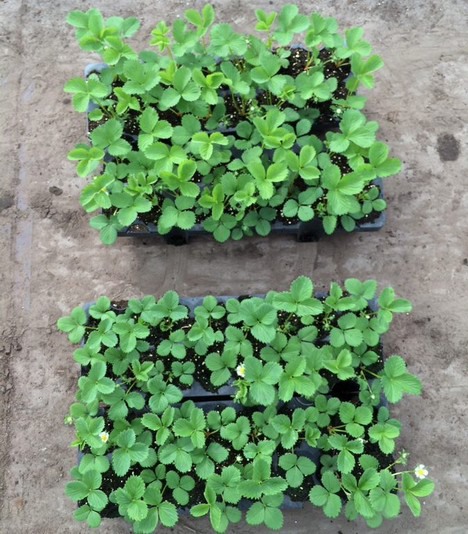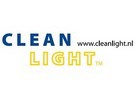In the Netherlands, Plantenkwekerij Kapteijns propagates strawberry plants in a greenhouse. A spray boom regularly 'flies' over the crop. This is no longer an unusual occurrence for the grower. He has been using UV crop protection for years.
In 2012, the nursery's Piet-Hein Kapteijns contacted CleanLight. He asked technical questions about UV crop protection, specifically for cultivating strawberry and leek plants.
Back then, Plantenkwekerij Kapteijns already had an insect-proof greenhouse. That allowed them to control pests without chemicals. But Piet-Hein wanted to deliver sustainable products. "I want to give my customers a residue-free product. So, they have greater options for concerning crop protection scheduling. My clients appreciate that," he explains.
Fully automated
The UV Crop Protectors are installed on a fully automatic watering beam. The UV light, therefore, comes from above. "I knew it wouldn't reach the entire plant. I'd seen that at other nurseries that work with UV technology. But that's not necessary either. If you reach part of the plant, the whole plant becomes stronger and more resilient. And that's what it's all about. This method is part disease fighting. But above all, it strengthens the plants."
 Inhibiting growth
Inhibiting growth
Kapteijns programs the system to treat the crop at least once a day. He has, however, observed something interesting over time. "If I treat the crop several times a day, the plants shorten and become stronger and more compact. It looks like they grew outside, in full sunlight."
"An expensive convertible greenhouse has the same effect. That means I don't have to trim the crop as often, if at all. That, in turn, provides all kinds of advantages, labor as well as disease-wise," Piet-Hein says. Using UV technology means his greenhouse's products are disease and residue-free. They also weigh more and are more compact.

Saving after careful calculation
That begs the question - if UV works so well, why don't all nurseries use it? Piet-Hein partly answers: "We already had a boom. So, we could quickly calculate how much we'd be investing. Now, we save on resources and labor. Companies without watering beams should do some careful math first. They must see if this method pays off."
Support
"UV works just like water, nutrition, and chemicals. Too much or too little doesn't give the desired results. So, for the first few months, it's important that CleanLight provide the correct guidance. That's to help growers find their way. After a few months, the path will become clear. But it doesn't at first," the grower and Arne Aiking of CleanLight add.
“I visit businesses in Germany and the Benelux every day. That's to provide that guidance. After a few months, the farmers increase or decrease the dosage. That depends on their crop and greenhouse conditions," concludes CleanLight's Arjo van der Sluis.
For more information:
Arjo van der Sluis
CleanLight
Tel: +31 (0) 634 325 124
Email: arjo@cleanlight.nl
Email: info@cleanlight.nl
Website: www.cleanlight.nl
